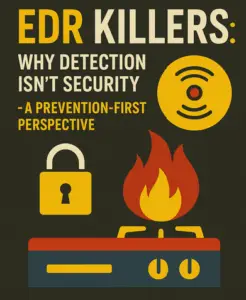More often than anyone would like, businesses face the unsettling reality of having their sensitive information exposed via a breach. Even more concerning to consumers, these businesses store and retain data belonging to their customers which waterfalls down to not only expose business data, but individual user data as well. But what happens after the breach? How do you pick up the pieces and protect what’s left? Let’s explore what you should do immediately following a breach and how to turn a moment of crisis into an opportunity for resilience.
The First Steps: Taking Control in the Chaos
Picture this: you’ve just discovered a breach. Panic sets in, but now is the time to act decisively. The first thing you need to do is confirm that the breach has occurred. Work with your IT team who are professionals when it comes to monitoring the network to verify the intrusion and understand its scope. The breach response effort will require intentional coordination across different teams like IT, legal, PR, and management.
Once confirmed, it’s critical to contain the damage. Think of it like stopping a leak in a sinking ship. While the ship will certainly need further maintenance once back at port, there are certain time-sensitive matters that need to happen at sea to keep it afloat. Isolate the affected systems to prevent the breach from spreading further. This step not only limits damage but also buys you precious time to plan for the next step. Calling in the experts is another must. Whether it’s an internal incident response team or third-party professionals, these experts are your best allies in determining how the breach happened and what needs to be done next. Transparency is key at this stage. Your stakeholders, be it customers, employees, or partners, deserve to know what happened. While this may feel daunting, keeping them in the loop fosters trust and shows that you’re taking the situation, and its impact to their livelihoods, seriously.
Understanding the Fallout: Assessing the Damage
Once the breach is under control, the next phase is all about understanding the damage. What data was potentially accessed? Was it personal identifiable information (PII), financial records, or intellectual property? Knowing what’s at stake will guide your response. Equally important is understanding how the breach occurred. Was it a phishing email that tricked an employee? Malware that slipped through an unpatched system? Identifying the method used provides invaluable lessons for future prevention. Finally, take stock of the potential long-term effects. Could the breach lead to identity theft, financial losses, or reputational harm? Assessing these risks helps prioritize your next steps.
Navigating Legal and Regulatory Waters
Breaches often come with a legal and regulatory minefield. Depending on where you operate and the type of data affected, you may need to notify regulatory bodies and comply with frameworks like GDPR or CCPA. Compliance isn’t just a legal requirement—it’s a chance to demonstrate your commitment to accountability.
Rebuilding Trust and Resilience
Recovering from a data breach isn’t just about patching the vulnerabilities. It’s about rebuilding trust with those who rely on you. Start by communicating openly about the steps you’re taking to address the breach. Offering resources, like credit monitoring or identity theft protection, shows that you care about the impacted parties. From there, it’s time to invest in your defenses. Conduct a comprehensive security audit and consider partnering with a managed security service provider (MSSP) to fortify your organization against future attacks. Security isn’t a one-time fix—it’s a continuous commitment.
Looking Ahead: Prevention is Key
While no one can promise immunity from data breaches, there are steps you can take to make your organization a harder target to compromise. Train your team on cybersecurity best practices. Keep your systems and software updated. Regularly conduct security assessments and act upon the recommendations outlined in assessment reports. Use strong passwords and enable multi-factor authentication across all business systems. And most importantly, don’t go it alone. Investing in a trusted partnership with a trained cybersecurity partner pays dividends over time when it comes to security posture, business scalability, and return on investment.
Join the Conversation
Data breaches are complex, and every situation is unique. That’s why we’re dedicating this week’s Safety Brief live stream and podcast to unpacking real-world examples, sharing expert insights, and equipping you with actionable strategies for breach recovery. Don’t miss it—tune in to our conversation here and learn how to turn the tide in your favor.




